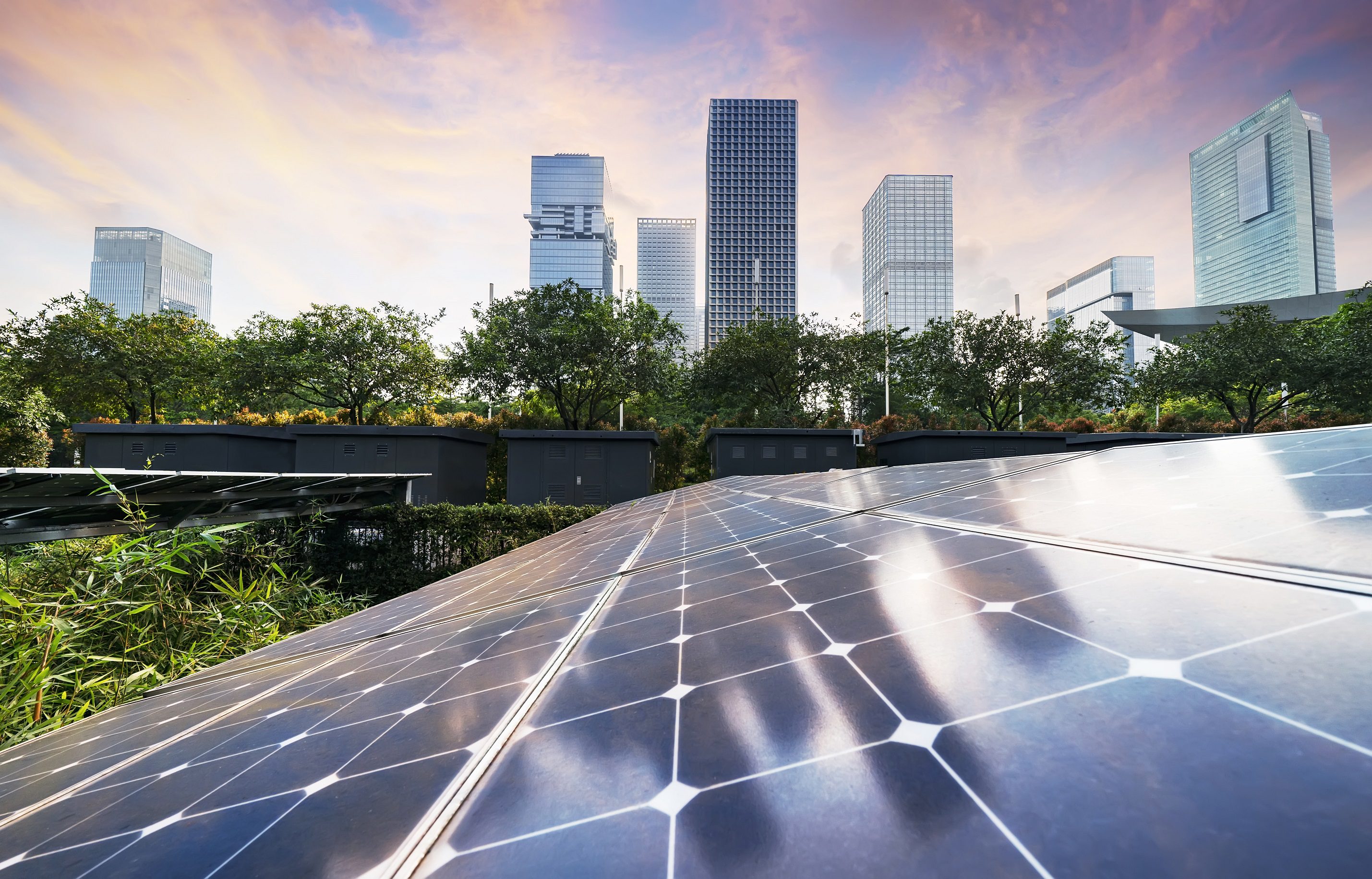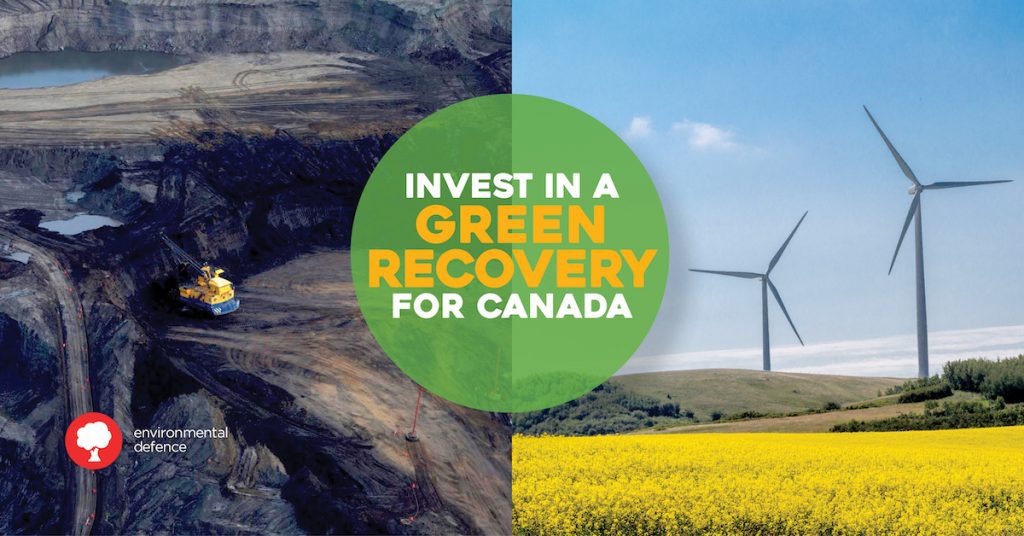As we chart our post-COVID future the Canadian government will have to help the economy recover from the fallout caused by the COVID-19 pandemic. Canada’s economic recovery must be consistent with fighting climate change and creating a just and clean economy. To make this happen, we must start planning now.
 The pandemic may have caused a short-term reduction in pollution in many parts of the world, and in Canada too, but the climate crisis has not gone away, and pollution levels are already surging back up in countries re-starting their economies. Indeed, climate change remains the single largest threat to our economy and to public health. The global plastic pollution crisis has not dissipated either. In fact, the plastics industry is using the pandemic to argue for even more single use plastic. And our business-as-usual approach allows thousands of toxic chemicals to be released into our environment and consumer products, which is making us sicker and even less resilient to viral epidemics.
The pandemic may have caused a short-term reduction in pollution in many parts of the world, and in Canada too, but the climate crisis has not gone away, and pollution levels are already surging back up in countries re-starting their economies. Indeed, climate change remains the single largest threat to our economy and to public health. The global plastic pollution crisis has not dissipated either. In fact, the plastics industry is using the pandemic to argue for even more single use plastic. And our business-as-usual approach allows thousands of toxic chemicals to be released into our environment and consumer products, which is making us sicker and even less resilient to viral epidemics.
As our economy and our society recovers from the pandemic, we cannot turn our backs on environmental protection, and we can’t let our economic recovery trump Canada’s commitments to fight climate change, protect nature, end plastic pollution, and protect Canadians from toxics in our air, water and products. And the good news is that there isn’t really any good reason that we should abandon these goals.
A green recovery makes sense economically. Economists have studied the impacts of over 700 stimulus programs funded across the world in response to the 2008 economic collapse. They found that green stimulus projects were better in multiple ways: they created more jobs, and delivered a better bang for the government’s buck, in both the short and long term. Since the government will spend – and has already earmarked- billions in funding to kick-start our economy – we should be pushing forcefully to ensure that funding goes to projects that will protect Canadians health, not reward big polluters.
Other countries including South Korea, France, and Germany are committed to a green recovery. And the entire European Union has pledged that its recovery plan will not set back its climate ambition, and is aiming to raise 150 billion Euros ($230 billion CAD) to fund green projects. It is also attaching stringent green conditions to its spending. This is the leadership that Canada needs to follow.

Here’s what a green recovery should look like for Canada:
1) Do no harm.
Like in the EU, Canada needs to pledge that recovery programs will not set environmental progress back. This means not caving to the fossil fuel or petrochemical industries. Bailout packages must not encourage unqualified handouts, regulatory rollbacks, or regressive subsidies that enrich shareholders or CEOs, particularly those who take advantage of tax havens. These programs must support a just transition towards clean energy and a fair economy that creates decent work and leaves no one behind.
2) Invest in climate solutions.
There are lots of carbon reducing projects that need greater investment and would put tens of thousands of people to work in every region across the country —in jobs like insulating homes, manufacturing electric buses, or building and maintaining wind farms. The Canadian government recently committed to go further on fighting climate change – COVID shouldn’t change that. Canada should invest in projects that create jobs, boost our clean economy, drive energy efficiency retrofits, support more renewable power, build out electrified public transportation, and get more electric vehicles on the road – the list of opportunities goes on.
3) Circularize the economy.
Our wasteful use of unnecessary single-use plastics isn’t just bad for the environment, it’s bad for our economy. A report done for the federal government showed that we’re literally throwing away billions of dollars of valuable materials every year because we don’t reuse and recycle. If we invest in systems to move us toward a circular economy, it would create upwards of 40,000 jobs and save an estimated $500 million in annual waste management costs. As a first step, Canada needs to add plastics to the Toxic Substance List under the Canadian Environmental Protection Act, and use its regulatory authority to enable the shift toward circularity.
4) Invest in nature.
If there’s one thing Canada has in abundance, it is awe-inspiring natural spaces – but these spaces are not well enough protected. We need to invest more in protecting nature in Canada, and play to this strength. We also need to invest in protecting and restoring the Great Lakes. The Great Lakes Restoration Initiative in the U.S., born out of the 2008/09 financial crisis, has not only delivered impressive environmental benefits, but has transformed local economies across the region as well. All told, it’s returned $3.35 USD to the economy for every dollar invested. Funding to clean up contaminated sites, prevent nutrient pollution, create habitat, and control invasive species supports healthier and more resilient communities as well as boosting the tourism and fishery economies. Canada has 20% of the world’s supply of surface fresh water. Let’s invest in its protection and restoration.
5) Lead a global shift to green chemistry.
Exposure to toxic chemicals makes us sicker, deepens health disparities, exacerbates environmental racism, and threatens the survival of many species like bees and whales. It’s beyond evident that how we regulate chemicals isn’t working. When governments banned a handful of cancer-causing teflon chemicals known as PFAS, the industry created 5,000 additional “forever chemicals” to replace them. We need a new model that prioritizes substitution of harmful chemicals like PFAS with safer ones. To make that happen, Canada must reform the Canadian Environmental Protection Act (the toxics law known as CEPA) and invest in programs that can help drive innovation and attract global investment in the green chemistry sector. Funding a Canadian Centre for Chemical Substitution would be a great start.
Environmental Defence also joined hundreds of other organizations across the country to endorse principles of a just recovery that puts people first. For years, we have witnessed the results of chronic under-investment and inaction in the face of the ongoing, pre-existing crises of colonialism, human rights abuses, social inequity, ecological degradation, and climate change. Now, the COVID-19 crisis is forcing governments and civil society alike to reckon with the inadequacies and inequities of our systems.
Help us push for the green recovery we want and need. Send a letter to your MP, and lets build a more sustainable and resilient Canada, together.










